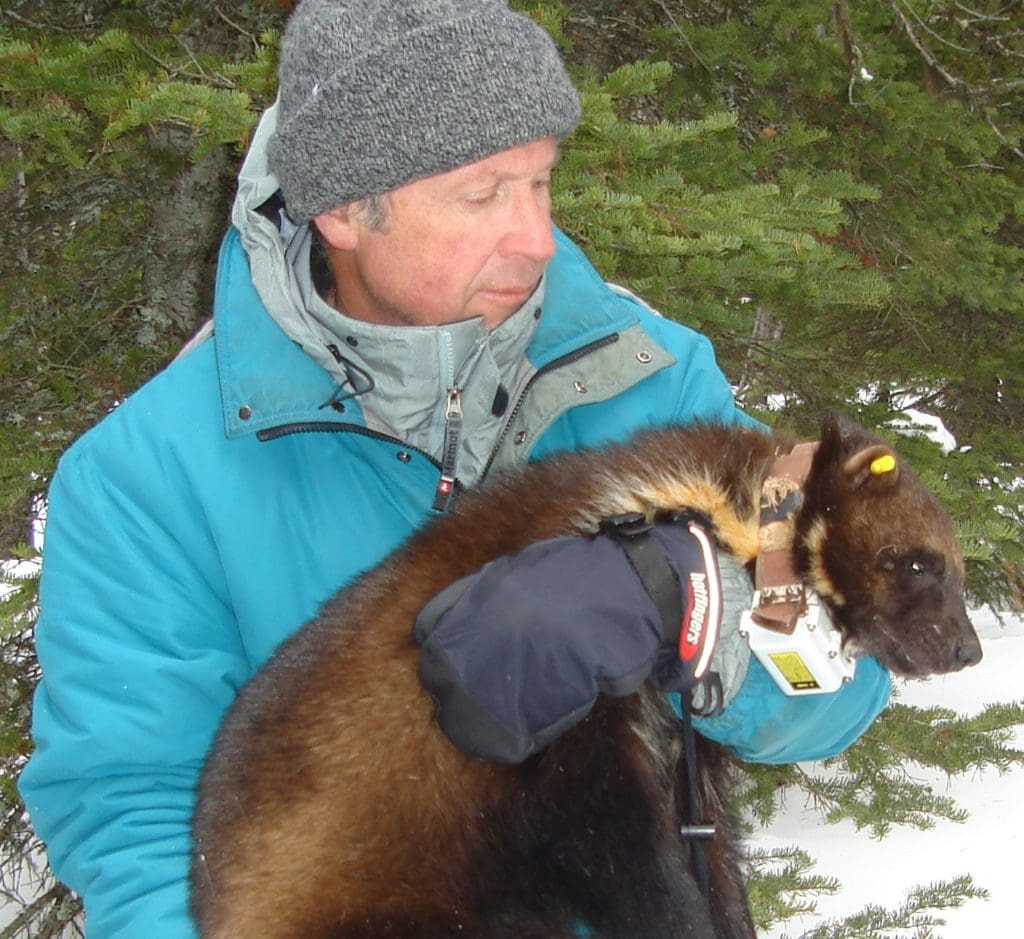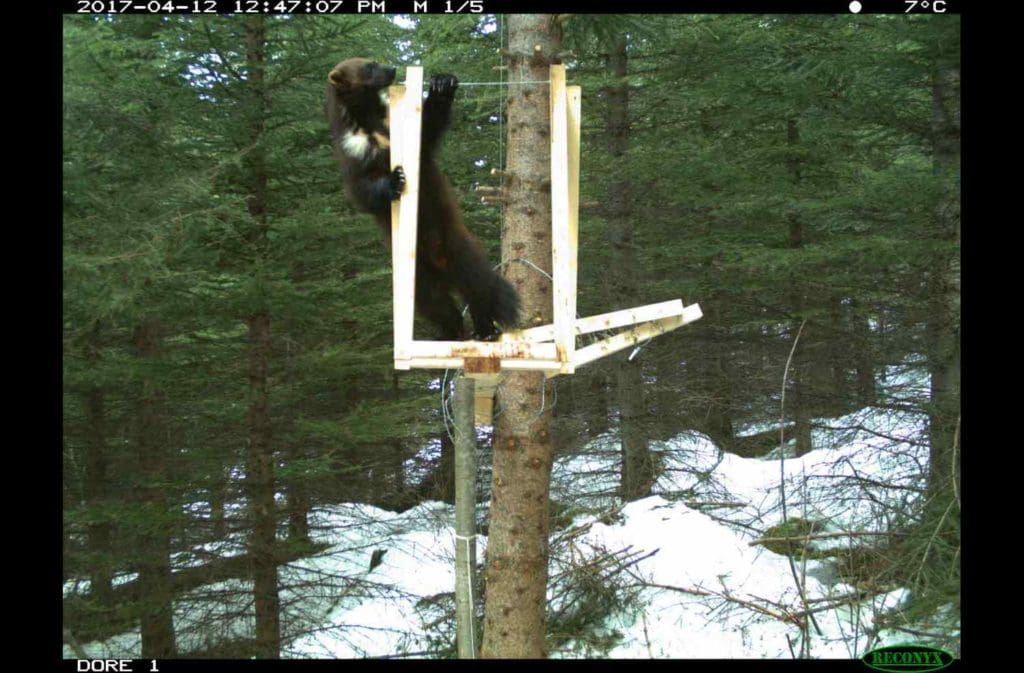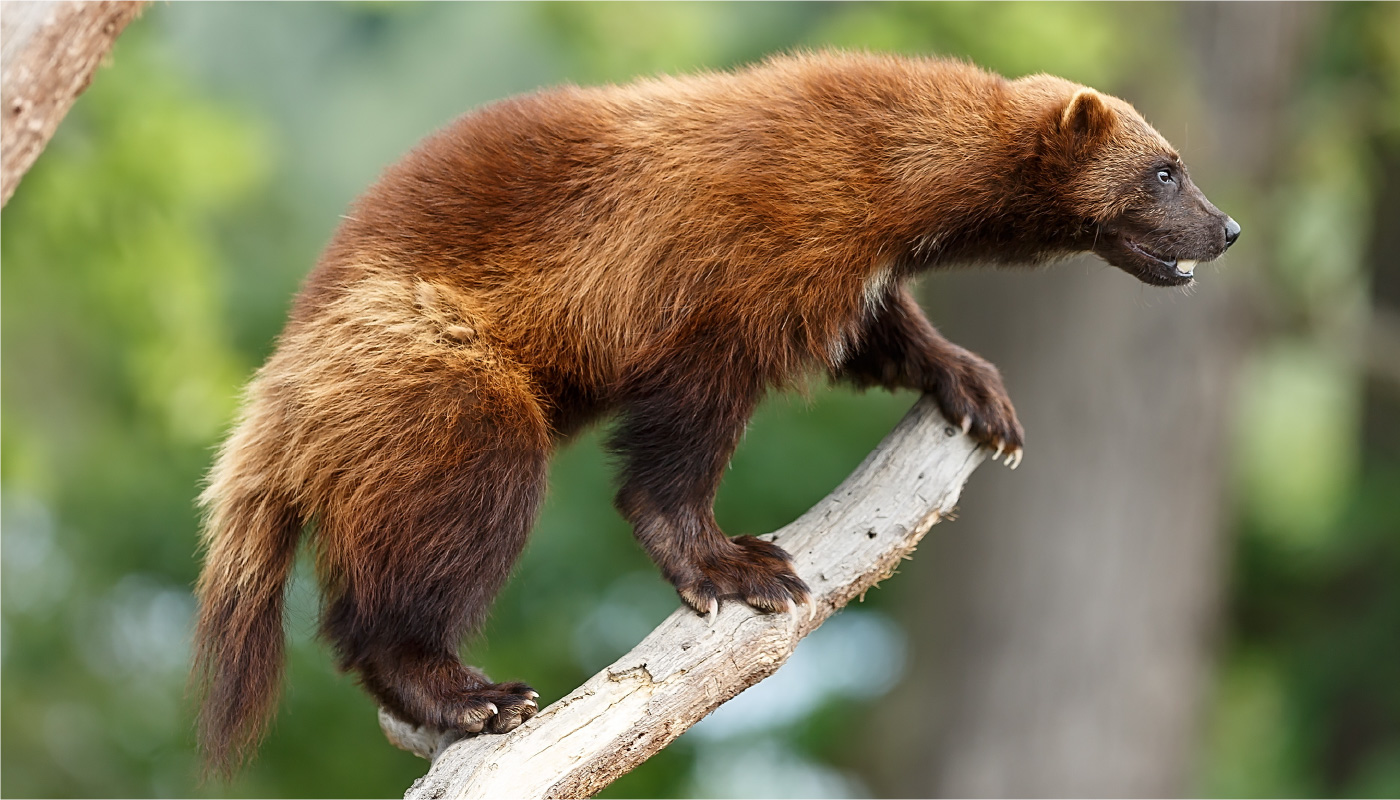Y2Y supports research to strengthen North America’s trans-boundary wolverine population, and is informing management policies to help them thrive.
What is the threat?
At just 30 pounds (13 kilograms) on average, a wolverine is arguably one of the toughest animals in the wild. It can stand up to a grizzly bear for its kill, and win.

Wolverines have been tracked traveling 500 miles (800 kilometers) across three American states in only 10 days. They’ve also been seen climbing the near-vertical face of Mount Cleveland, Alaska in January.
Although fierce, wolverines are also vulnerable. Like grizzly bears, they need interconnected blocks of intact habitat to survive — but unlike grizzlies, they are highly territorial and will not allow other wolverines of the same sex to live in their territory. As well, female wolverines need deep snow lasting into the spring to dig dens and raise young.
A combination of logging, mining, backcountry recreation, and unsustainable trapping has put pressure on wolverine populations — they have been extirpated from most of their range in central/eastern Canada and parts of the Lower 48 states. In addition, a growing road network and traffic threatens to cut off U.S./Canada populations from each other.
These elusive animals are currently listed as a species at risk in Canada. If their populations do not remain connected across the U.S.-Canada border, and they are being considered for listing as endangered by the U.S. Fish and Wildlife Service.
What is the opportunity?
Elusive and naturally rare, wolverines are hard to study which means that their ecological needs are not well understood.
To ensure they thrive throughout the Yellowstone-to-Yukon region, including on both sides of the Canada-U.S. border, we must understand more about where wolverines live and how human and natural factors affect behavior and populations.
Researchers in the U.S. have found that motorized recreation can have impacts on wolverines. Recent research in Canada, in part supported by Y2Y, points to major highways as barriers for genetic connectivity, such as Canada’s highway 3 through the Rockies.
Wolverine trapping in southern B.C. and Alberta has also been shown to occur at problematic levels. That’s why in 2020, the Government of British Columbia introduced a ban on wolverine trapping in the entire Kootenay region of B.C.

What are we doing?
Y2Y is helping to support and communicate the findings of wolverine research, particularly in British Columbia, and helping inform management policies to help them thrive.
Data and results will be used to inform agency decision-makers, landowners, industry, and First Nations about the needs of wolverines and to ensure that this information is incorporated into land-use plans, management plans, highway mitigation, and other projects.
You can help, too.
We are partnering on a number of exciting projects with Wolverine Watch. For instance, if you ski, snowshoe, snowmobile or take part in other winter activities across western Canada — particularly the Selkirk, Purcell, Monashee, and Cariboo ranges of southeastern B.C. — researchers are asking you to keep your eyes peeled for signs of wolverines and share what you see. It’s your chance to be a community scientist!
Researchers are interested in direct sightings of wolverine as well as indirect signs via their tracks, scat, and dens. Reports can be made online.
This information will help researchers to understand how human activities and natural factors affect wolverine distribution, reproduction, connectivity and gene flow.
Who are we working with?
- Wolverine Watch
- Dr. Tony Clevenger
- University of Calgary
How you can help
Help advance wolverine research in this area by taking part in community science:
Recent news and updates
- Global wolverine research spanning 20 years shows what the species needs to survive Jan. 25, 2022
- Got an eye for wildlife? Dec. 15, 2020
- Sharing B.C.’s backcountry with fellow snow lovers
- Wolverine research study boosted by citizen science | Nelson Star, Nov. 13 2020
- Revelstokians can help in wolverine research | Revelstoke Review, Mar. 7, 2020
- Research paper: Demographic fragmentation of a protected wolverine population bisected by a major transportation corridor | Biological Conservation, August 2019
- Wolverine populations at risk without connectivity | Rocky Mountain Outlook, April 4, 2019
- Species to know about: Wolverines, April 17, 2019


